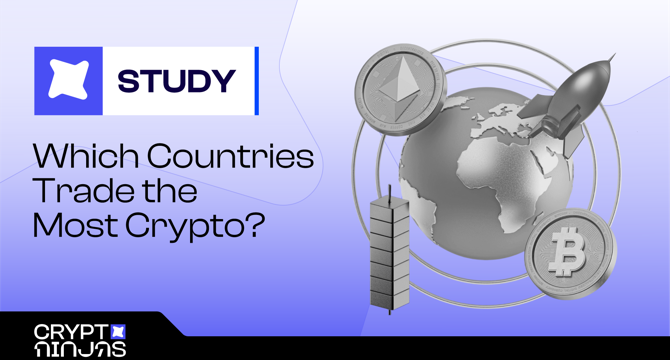Cryptoninjas
2w
244

Image Credit: Cryptoninjas
Study: Which Countries Trade the Most Crypto?
- A study conducted by CryptoNinjas and Storible delves into global cryptocurrency trading trends, highlighting top trading countries in both centralized and decentralized exchanges.
- In 2025, global cryptocurrency trading volume is projected to exceed $297 trillion, with the United States leading as the most active trading nation, surpassing $4 trillion.
- Europe dominates the market, accounting for half of the world's total crypto transaction value, with Asia, North America, and Africa also showing significant participation in crypto trading.
- Europe's dominance is attributed to progressive regulations, strong financial infrastructure, and increasing institutional participation, especially with regulations like MiCA coming into effect.
- Asia's leading trading hub is Turkey, followed by India and South Korea, driven by factors like inflation concerns, currency devaluation, and tech-savvy populations.
- Africa, experiencing rapid growth, sees Nigeria leading in trading volume due to remittance needs and financial exclusion, while South America's adoption is fueled by hyperinflation and economic instability.
- The United States remains the global leader in crypto trading, benefiting from high institutional involvement and regulatory discussions, with a focus on developments like Bitcoin ETFs by institutions like BlackRock and Fidelity.
- CEX trading still dominates, with the US, Turkey, and India being the most active traders, while decentralized exchanges (DEXs) are gaining traction, particularly in countries facing regulatory restrictions.
- Overall, the global crypto market is witnessing significant growth, with regions like Europe, Asia, Africa, and South America shaping the future of finance through the adoption of digital assets.
- The study's methodology involved data collection from various sources to estimate trading volume accurately, considering factors like web traffic, search volume, supported languages, and regional demographics.
- While the study provides valuable insights into crypto trading trends by country, limitations include the influence of VPNs on web traffic data and the potential impact of regulatory changes on trading volume.
Read Full Article
14 Likes
For uninterrupted reading, download the app